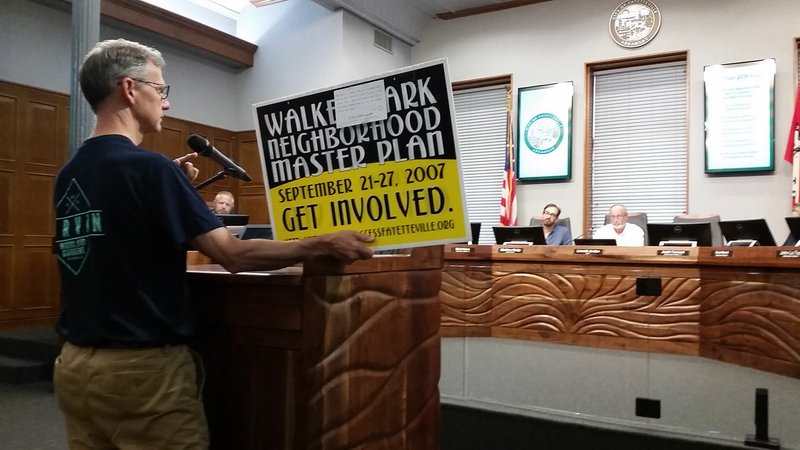FAYETTEVILLE -- Residents who wish to give the City Council a piece of their mind during meetings now will have a maximum of five minutes to do so, with a few exceptions.
With a 7-0 vote Tuesday, the council approved limiting the time residents have to speak during the public comment portion of agenda items. Alderwoman Adella Gray sponsored the proposal which is set to take effect June 20.
Next meeting
When: 5:30 p.m. June 20
Where: Room 219, City Hall
113 W. Mountain St.
Gray said she wanted to avoid residents having to wait an exorbitant amount of time to speak during well-attended meetings. Residents have reported having to leave during long discussions because of too much time passing from long-winded speakers, she said.
The council has, in the past, limited public comment to three minutes during especially lengthy meetings, such as the discussion leading up to the civil rights ordinance vote. Under the rule change, groups will be encouraged to get together beforehand and outline talking points, which will cut down on repetition and open the floor to additional residents, Gray said.
"What we're hoping is that we'll have better organization and more participation from citizens so folks can come and wait a reasonable amount of time and not have to give up on their chance to speak," she said.
The monitors in front of each council member and facing the public in the chamber will display timers with each speaker. A timer also will be visible from the podium. City Attorney Kit Williams said previous councils have floated the idea but never put it in writing to have a vote. The rule would apply only to City Council meetings and not to meetings with the Planning Commission or other city entities, he said.
Mayor Lioneld Jordan will reserve the right to extend a speaker's time. Also, any council member can make a motion to give a resident extra time or bring a resident back to the podium. Such a motion would require a second and a majority of yes votes to pass.
The city already has a similar rule for residents who wish to give a slide show presentation to the council. A motion to allow the presentation has to pass the council and the presentation cannot exceed five minutes.
Alderman Mark Kinion said he believed the rule change would encourage residents to approach the podium in a more efficient manner. Alderwoman Sarah Marsh pointed out residents can always email council members to address issues that garner a deeper discussion.
Alderman John La Tour said most people should be able to convey an idea in under five minutes. The hallmark of a free government is accessibility, he said.
"I think this rule will help facilitate that to a greater extent," La Tour said.
An earlier ordinance to rezone just under half an acre in the 700 block of South Washington Avenue near Walker Park ushered four neighbors to speak. The council voted 6-1, with Kinion dissenting, to approve the rezoning.
Developer Michael Ward said the new zoning would equate to a half a dozen smaller, less expensive houses versus three larger, more expensive houses. It also would encourage a variety of housing types such as a duplex, triplex or cluster homes that share a courtyard, he said.
Resident Alan Ostner, an active participant in the campaign to create a Walker Park neighborhood plan a decade ago, said the plan resulted in a "bat signal" that encouraged development, which he commended. However, the previous zoning's model of bringing single-family homes to the neighborhood has worked and property owners should apply for a permit if they want to bring something different, he said.
"I don't think this rezoning is helpful to the neighborhood. I think it's a problem. I think it's inappropriate," Ostner said.
In other business, the council swapped an ordinance to rezone College Avenue from Maple to North streets for an ordinance to introduce the urban thoroughfare light zoning code into the city's books.
Planning commissioners last month recommended zoning much of the stretch to the new zoning district. Williams advised the council to take up the new district as a separate issue, which the council agreed to do. It left the item on the first reading.
The Ordinance Review Committee, comprised of half the council, will discuss the new zoning district in greater detail and bring a revised version to the full council. Alderman Justin Tennant, the committee's chair, was not present during Tuesday's meeting to set a date for that discussion.
Urban thoroughfare light mirrors the urban thoroughfare district already on the books but limits building height to 50 feet instead of 75 feet. Several residents had voiced concern rezoning College Avenue would allow student-occupied apartment complexes to tower over nearby neighborhoods.
The ordinance the committee will review also would change the city's code to measure building height in stories rather than feet.
NW News on 06/07/2017

